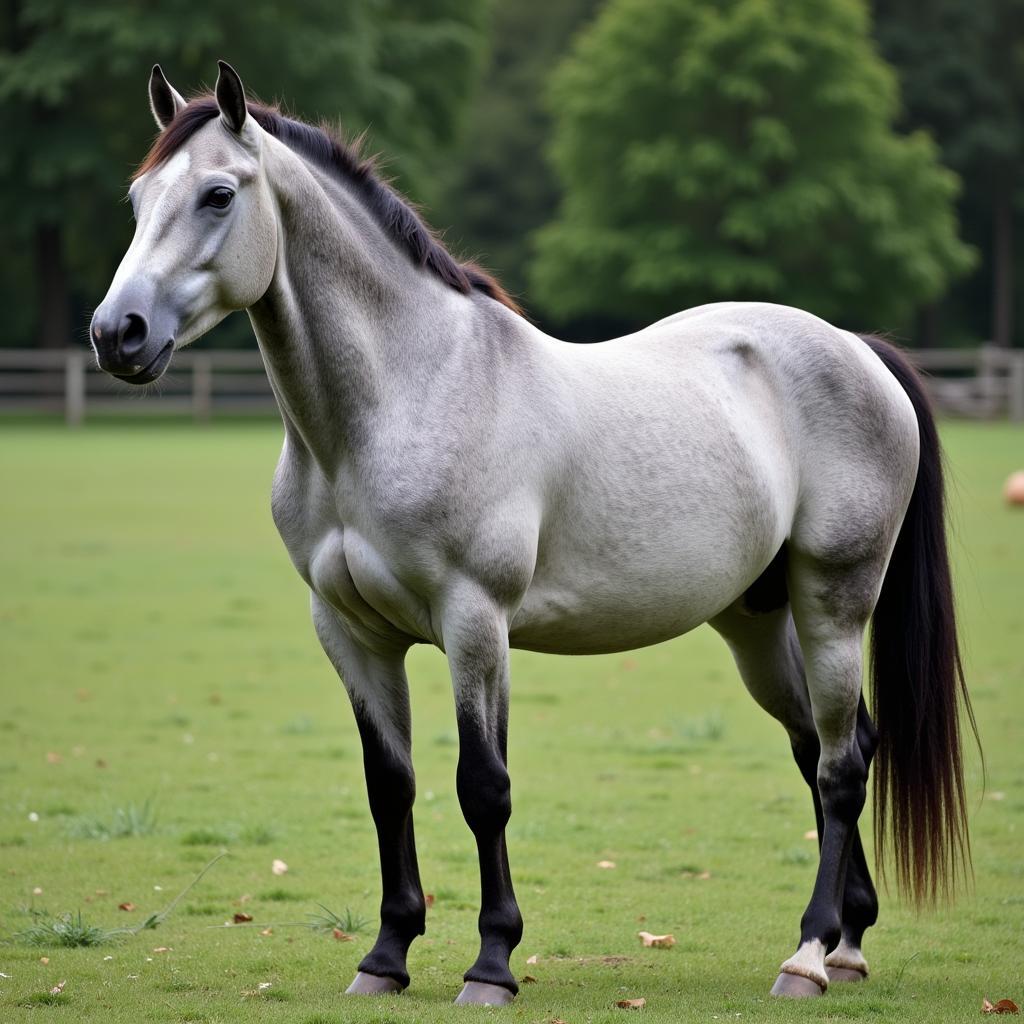Clipping your horse can be a game-changer, especially during the colder months when they’re working hard and prone to sweating. Understanding the different Types Of Body Clips For Horses is essential for choosing the right clip for your horse’s workload and lifestyle.
Choosing the Right Clip: A Comprehensive Guide to Types of Body Clips for Horses
There are various types of body clips for horses, each designed to remove specific areas of hair while leaving others intact for warmth. Selecting the right clip depends on your horse’s activity level, how often they’re ridden, and the climate you live in. A full clip, for instance, removes all the hair, ideal for horses in intense training, while a trace clip targets only the areas that sweat the most. Let’s dive into the specifics of each clip.
The Trace Clip: Ideal for Light Work
The trace clip is perfect for horses in light work. It removes hair from the underside of the neck, the chest, and the shoulders – areas prone to sweating. This clip allows for enough hair growth to maintain warmth while preventing excessive sweating. Many owners find clippers for horses designed for trace clips to be easy to handle and effective.
The Irish Clip: A Step Up for Moderate Exercise
The Irish clip is a bit more extensive than the trace clip, removing hair from the underside of the neck, chest, shoulders, and belly. It’s a suitable choice for horses in moderate work, providing a balance between warmth and sweat management.
The Blanket Clip: Protecting the Topline and Legs
The blanket clip gets its name from resembling a horse wearing a blanket. Hair is removed from the neck, shoulders, chest, and belly, while leaving the back and legs unclipped. This horse blanket clip offers good protection against cold weather while still managing sweat in key areas.
The Hunter Clip: A Popular Choice for Hunting and Eventing
The hunter clip is similar to the blanket clip but also includes clipping the head. This is a popular choice for hunting and eventing horses, allowing for greater freedom of movement and preventing overheating during strenuous activity.
The Full Clip: Maximum Sweat Management for Intense Training
The full clip, as the name implies, removes all the hair from the horse’s body. This clip is best suited for horses in intense training regimes where maximum sweat management is crucial. Choosing the best horse body clippers is essential for achieving a smooth and even full clip. Remember, a fully clipped horse will require blanketing for warmth, especially in colder climates.
 Full Clip on a Grey Horse
Full Clip on a Grey Horse
Which Type of Body Clip is Right for Your Horse?
Choosing the correct clip is a key part of horse ownership. Consider your horse’s workload, the climate, and your individual needs. Don’t hesitate to ask a veterinarian or experienced groomer for advice. Proper clipping combined with appropriate blanketing ensures your horse stays comfortable and performs at their best throughout the winter months. You can find more information about clipping blades for horses on our website. With the right clip, you’ll be setting your horse up for success.
Conclusion: Ensuring Comfort and Performance with the Right Body Clip
Understanding the various types of body clips for horses is vital for maintaining your horse’s comfort and performance. From the minimal trace clip to the comprehensive full clip, each option serves a specific purpose. Choosing the right clip depends on your horse’s activity level and the climate. By carefully considering these factors, you can ensure your horse remains comfortable, healthy, and ready to perform at its best. Looking for more information on horse body clippers? Check out our other helpful resources on our website.
FAQ
- How often should I clip my horse? This depends on the clip and how fast your horse’s coat grows. Generally, every 4-6 weeks.
- What are the best clippers to use? We recommend checking our article on the best horse body clippers.
- Do I need to blanket my clipped horse? Yes, especially in colder weather, a clipped horse will need blanketing for warmth.
- Can I clip my horse myself? Yes, with practice and the right equipment. However, if unsure, consult a professional.
- How do I prepare my horse for clipping? Ensure your horse is clean and dry.
Common Clipping Scenarios
- Scenario 1: A horse used for light riding a few times a week in a mild climate might benefit from a trace clip.
- Scenario 2: A show horse competing regularly in a colder climate may need a blanket or hunter clip combined with appropriate blanketing.
- Scenario 3: A racehorse in intense training would likely require a full clip.
Further Resources on Justus Horses USA
Explore our articles on clipping blades for horses and horse body clippers for more in-depth information.
Need assistance with horse care? Contact us at Phone Number: 0772127271, Email: [email protected], or visit our location at QGM2+WX2, Vị Trung, Vị Thuỷ, Hậu Giang, Việt Nam. Our customer service team is available 24/7.